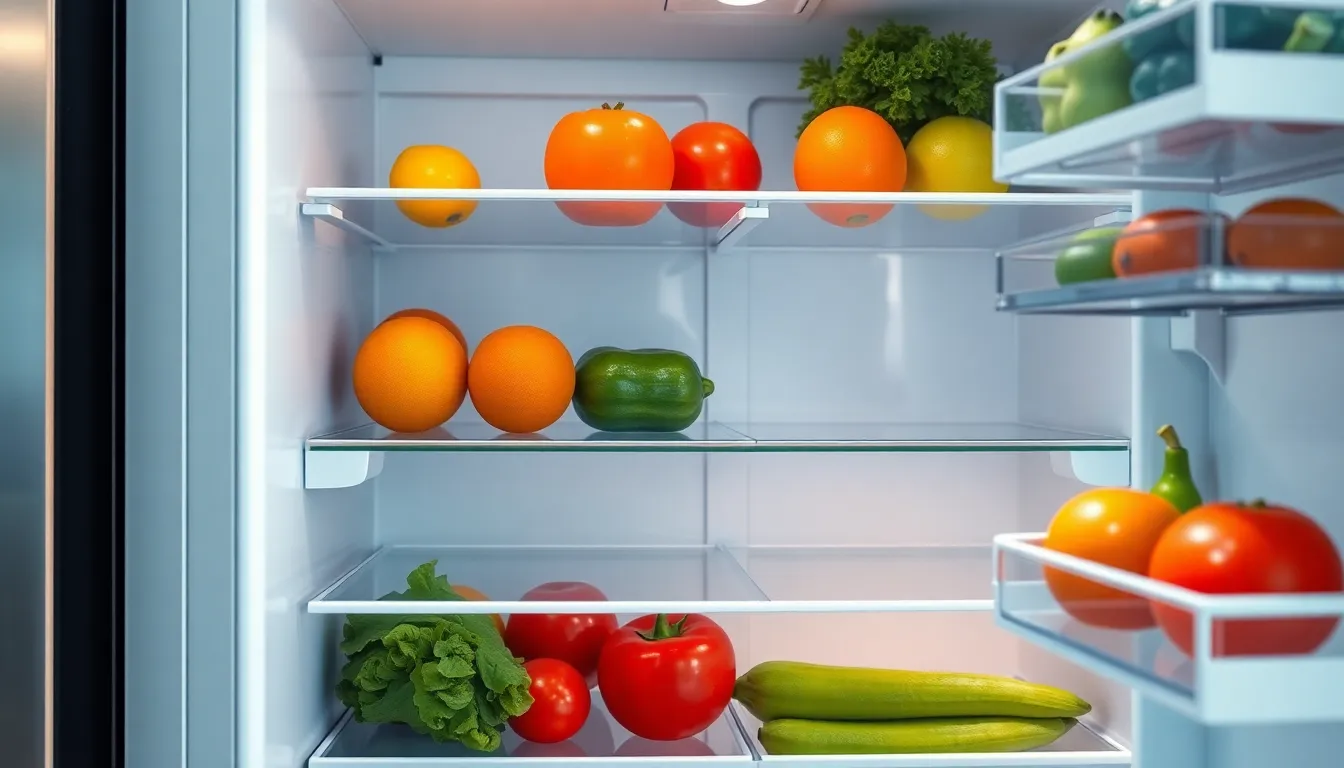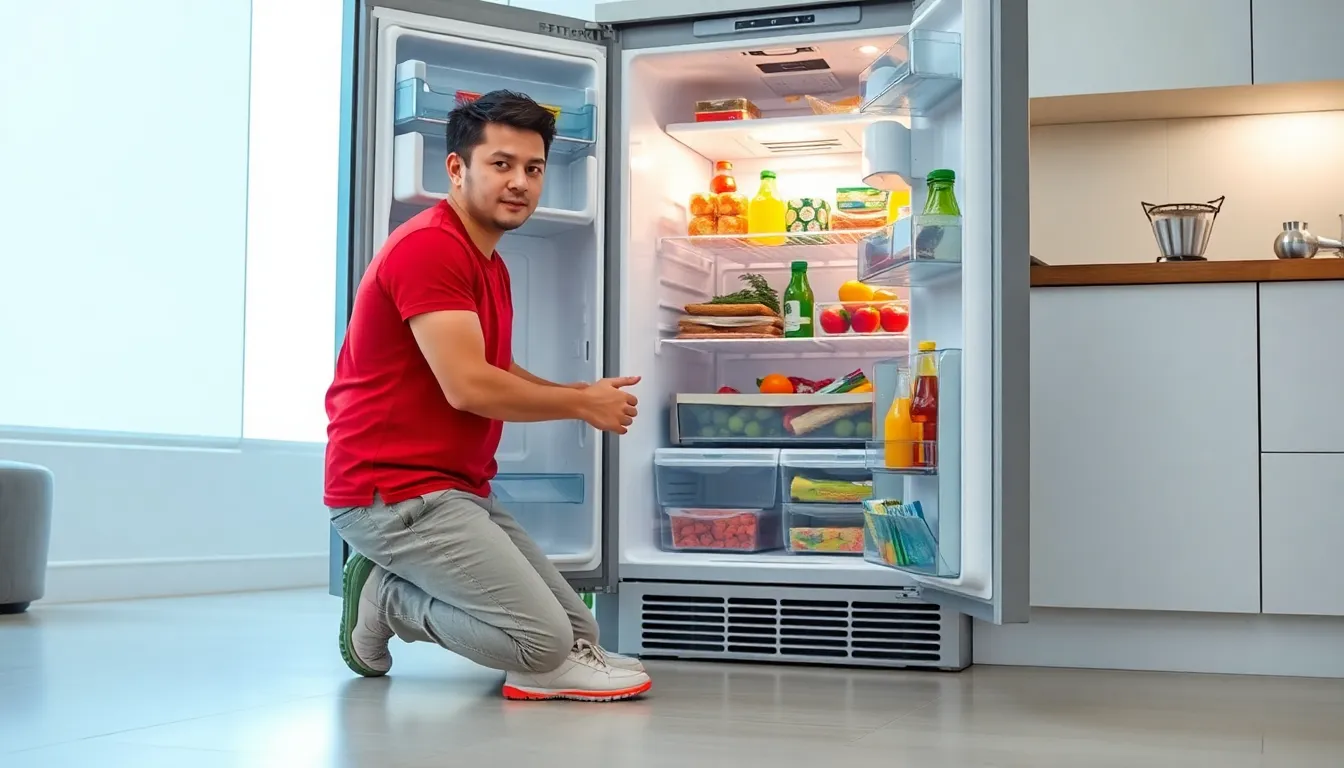Every kitchen has that one unsung hero—the refrigerator. It keeps food fresh and drinks cold, yet it often gets overlooked when it comes to maintenance. Think about it: how often do you give it a little TLC? Just like a car needs oil changes, your fridge needs a bit of care to keep running smoothly. Ignoring it could lead to unexpected meltdowns, and not the emotional kind!
Regular refrigerator maintenance isn’t just a chore; it’s a recipe for savings and peace of mind. A well-maintained fridge runs efficiently, saving energy and keeping your groceries from staging a revolt. So, let’s dive into some simple yet effective tips that’ll help keep your fridge in tip-top shape. After all, a happy fridge means happy food—and who doesn’t want that?
Table of Contents
ToggleImportance Of Refrigerator Maintenance
Refrigerator maintenance plays a vital role in food preservation and energy efficiency. Regular upkeep prevents breakdowns and prolongs appliance lifespan. Neglecting it can lead to increased energy bills due to inefficient operation. Keeping a refrigerator clean reduces the risk of odors and bacteria growth, enhancing food safety.
Additionally, maintaining optimal temperatures ensures food remains fresh longer. A well-maintained appliance minimizes waste caused by spoiled groceries. Ignoring simple tasks, like cleaning coils, can hinder airflow and cooling efficiency. Regularly checking seals prevents cold air from escaping, which supports energy conservation.
Through effective maintenance, users can save money while improving their culinary experience. Programmed reminders for cleaning and inspection create a proactive approach to upkeep. Monitoring temperature readings frequently results in immediate corrections when issues arise. Protecting the investment in a refrigerator aligns with the need for regular attention.
Equipped with routine inspections and adjustments, users can achieve consistent performance from their refrigerators. Lower energy consumption also contributes to environmental sustainability. By prioritizing maintenance, individuals ensure their refrigerators serve as reliable partners in food storage, reflecting their commitment to health and efficiency.
Common Refrigerator Issues

Refrigerators can encounter several issues that affect their performance and efficiency. Identifying these problems early helps prevent costly repairs and ensures that food remains fresh.
Temperature Fluctuations
Temperature irregularities can lead to spoiled food and unnecessary waste. The ideal temperature for a refrigerator is between 34°F and 38°F. When temperatures rise above this range, bacteria multiply quickly, compromising food safety. Common culprits for temperature fluctuations include dirty condenser coils, malfunctioning thermostats, and blocked vents. Regularly cleaning the coils and ensuring proper airflow promotes consistent temperatures. If stubborn fluctuations persist, checking the door seals for damage or considering a technician’s evaluation becomes essential.
Strange Noises
Unusual sounds can signal potential refrigerator problems. Buzzing, clicking, or humming may indicate that components like the compressor or fan are struggling. These noises often arise from debris lodged in the fan or inadequate lubrication. Identifying the source of the noise becomes crucial for maintaining a quiet kitchen environment. Inspecting the interior for loose items and leveling the appliance can resolve many sound issues. If noise persists despite these efforts, consulting a professional for diagnosis and repair might be necessary.
Regular Maintenance Tips
Regular appliance maintenance keeps a refrigerator running efficiently. Simple tasks can improve its performance and extend its lifespan.
Cleaning Coils
Cleaning coils significantly enhances energy efficiency. Dust and dirt accumulate on condenser coils, forcing the fridge to work harder to maintain temperatures. This extra effort increases energy consumption, raising utility bills. Ideally, cleaning these coils every six months removes debris and ensures proper airflow. A soft brush or vacuum attachment works well to reach tight spots. If coils are located near walls, moving the fridge may be necessary for thorough cleaning. Keeping coils clean also reduces the risk of overheating components, contributing to the appliance’s longevity.
Checking Door Seals
Checking door seals is crucial for maintaining optimal temperatures. Damaged or dirty seals allow cold air to escape, causing inefficiencies and temperature fluctuations. Regular inspection can identify gaps or cracks that compromise performance. A simple test involves closing the door on a piece of paper; if it slides out easily, seals may require replacement. Cleaning seals with warm soapy water removes residue that can cause sealing issues. Ensuring airtight closures helps maintain food freshness and minimizes spoilage, helping to keep grocery costs down.
Troubleshooting Common Problems
Temperature issues often arise in refrigerators. For instance, if food freezes in the fridge compartment, the thermostat might be set too low. Adjust it to the recommended range of 34°F to 38°F.
Blocked airflow can lead to warm spots in the refrigerator. Inspect vents for obstructions and ensure nothing is blocking the air circulation. Regularly cleaning the condenser coils also aids in maintaining a consistent temperature.
Strange noises may indicate malfunctioning components. If the appliance makes rattling sounds, check the compressor or fans. Abnormal noises often signify potential issues that require immediate attention.
Frost buildup in the freezer suggests a seal problem. Perform a simple test by closing the door on a piece of paper; if it pulls out easily, the seal may be compromised. Replacing worn door seals helps maintain temperature and improve efficiency.
Inconsistent cycling of the fridge can signal a problem with the defrost timer. If the unit cycles on and off frequently, consider checking the timer settings or consulting a professional.
Leaking water under the fridge may result from a clogged defrost drain. Inspect the drain for blockages and clean it promptly to avoid further issues. Keeping this area clear prevents water damage and improves overall performance.
Maintaining optimal humidity levels inside the fridge is crucial. If produce wilts prematurely, consider adjusting humidity settings to create a better environment for fruits and vegetables. Regular checks can help preserve freshness.
Final action steps involve routine maintenance checks. Scheduling cleanings every six months enhances energy efficiency and prolongs the appliance’s lifespan. Implementing these troubleshooting tips contributes to hassle-free refrigerator operation.
Regular refrigerator maintenance is essential for ensuring optimal performance and longevity. Simple tasks like cleaning coils and checking seals can significantly enhance energy efficiency and food safety. By staying proactive with upkeep users can avoid costly repairs and reduce energy bills while keeping their groceries fresh.
Taking the time to monitor temperatures and address minor issues as they arise not only supports a healthier kitchen environment but also promotes sustainability. Prioritizing these maintenance practices reflects a commitment to quality and efficiency in everyday life. Embracing these habits can lead to a more satisfying culinary experience and peace of mind.







